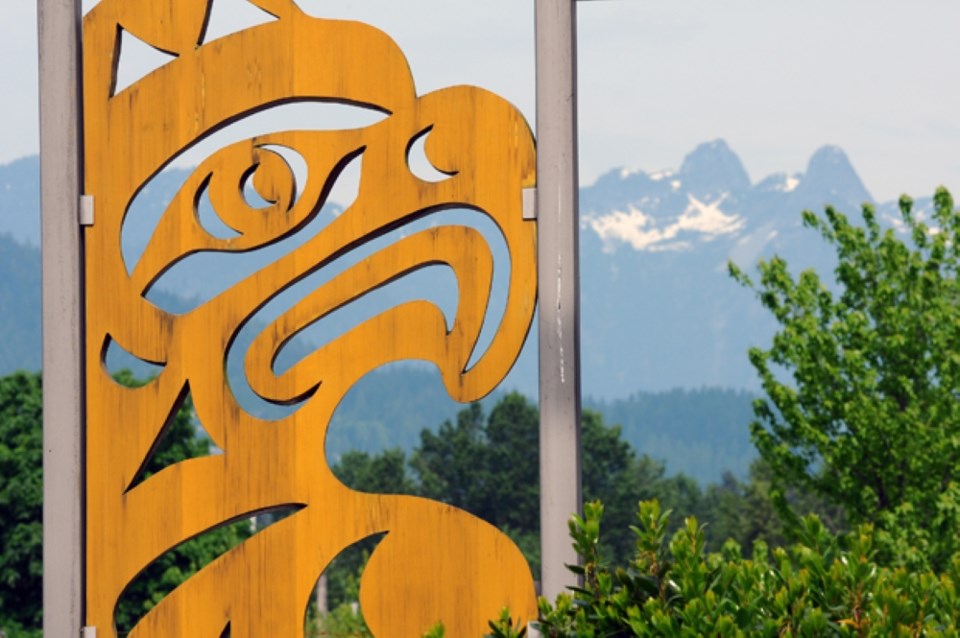Note: This story originally appeared in the North Shore Progress Report, a special feature section of the North Shore News.
Traditionally, the Squamish People are the Indigenous Peoples who speak the Sḵwx̱wú7mesh sníchim language.
While that language has become critically endangered, the large and sprawling Squamish Nation is making strong efforts to revitalize its mother tongue, and bring members back onto reserve land.
Total Sḵwx̱wú7mesh Úxwumixw (Squamish Nation) traditional territory is more than 6,700 square kilometres. Today, the nation is made up of 23 villages over 28.3 square kilometres on land parcels scattered from Vancouver to Gibsons Landing, north of Howe Sound.
Squamish Nation has a deep history in the region, with the oldest archaeological site in the territory, in Porteau Cove, dating back 8,600 years.
The modern era of the nation began in 1923, when a majority of Squamish people who were eligible voters requested several different Indian bands amalgamate into a single entity.
Now, the majority of its roughly 4,300 members live on the North Shore of Vancouver, and around 10 per cent of its population live in communities along the Squamish River in Squamish, B.C.
A number of efforts are underway to create a bright future for the Squamish people.
In 2021, the Squamish Nation put significant updates to its election process into effect, and revitalized its council. Before then, election laws hadn’t changed since 1981.
An ongoing initiative for Squamish Nation councillors has been to “bring their people home,” by creating diverse, affordable on-reserve housing options. Currently, over half of members live away from reserve land, and a waiting list for housing is 1,000-members long.
Last year, members voted to approve a plan to build three affordable housing projects designed to provide hundreds of new homes exclusively for the First Nation. Two of the sites are in North Vancouver communities, and the third is in Squamish.
The plan to house Squamish Nation members made more strides this year, after receiving a $32.3-million grant from the Canadian Mortgage and Housing Corp.’s Rapid Housing Initiative, which will have 80 new units built by the middle of 2023, with construction to start this coming summer. estítkw place (a safe place) will have 50 units, on Capilano Road.
The Squamish Nation’s most ambitious development project yet also sets aside a number of apartments for members, but is focused on the economic boost of building a major site in an urban area.
In May, the First Nation signed a memorandum of understanding with the City of Vancouver for a service agreement, intended to provide utilities to a planned 6,000-unit housing development on reserve land near Burrard Street Bridge. Two-hundred and fifty of the apartments are slated for members.
Central to Squamish Nation’s mission to preserve and reinvigorate use of its language, a new Language Commission is being set up this year. Five nominated members will play a vital role in guiding language programming for the nation.
The commission will oversee the use, health and promotion of the language, while also taking steps to make Sḵwx̱wú7mesh sníchim the nation’s official language.
The North Shore Progress Report also contained features on the City of North Vancouver, District of West Vancouver, Squamish Nation and Tsleil-Waututh Nation. The entire feature is also available as a digital edition.



